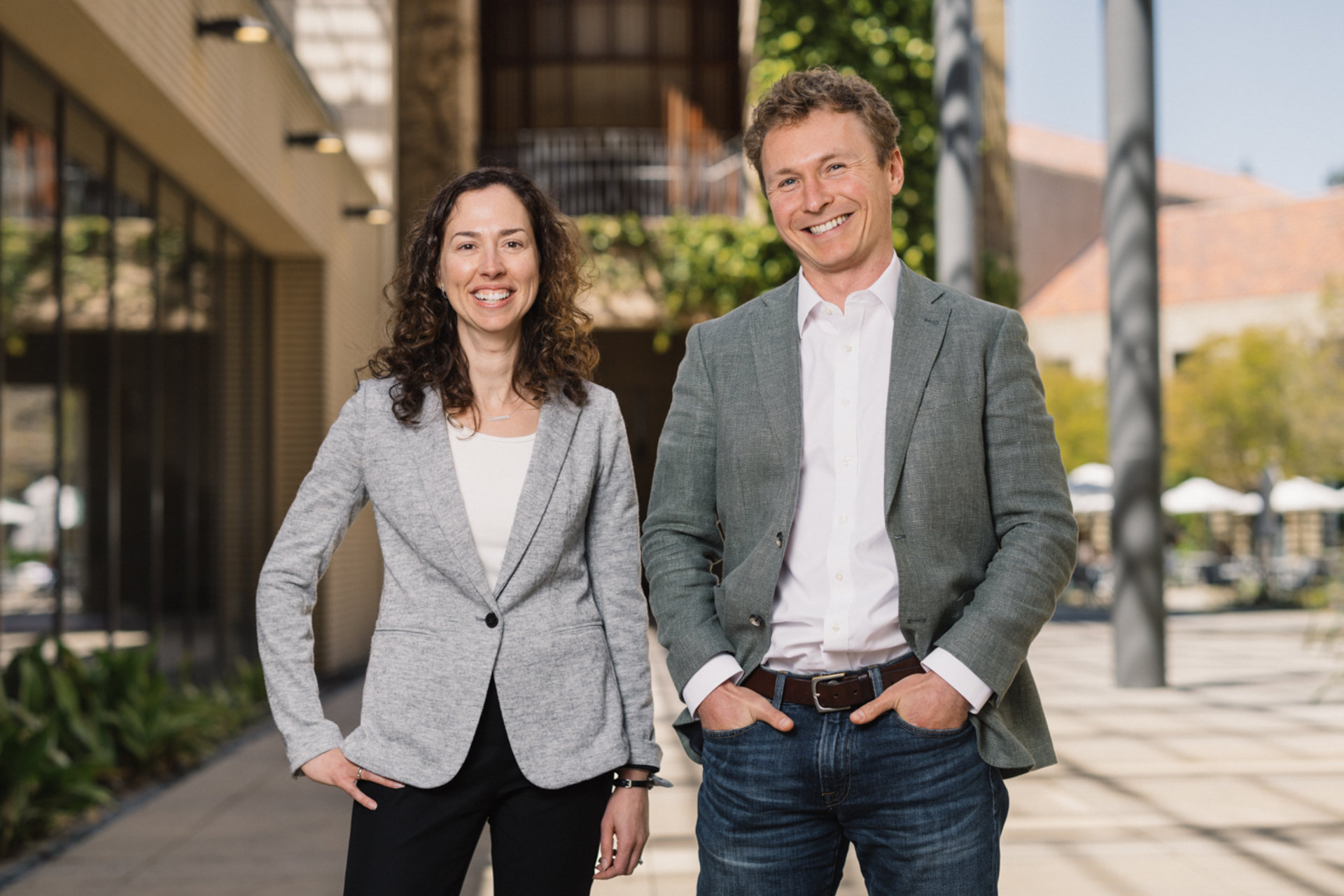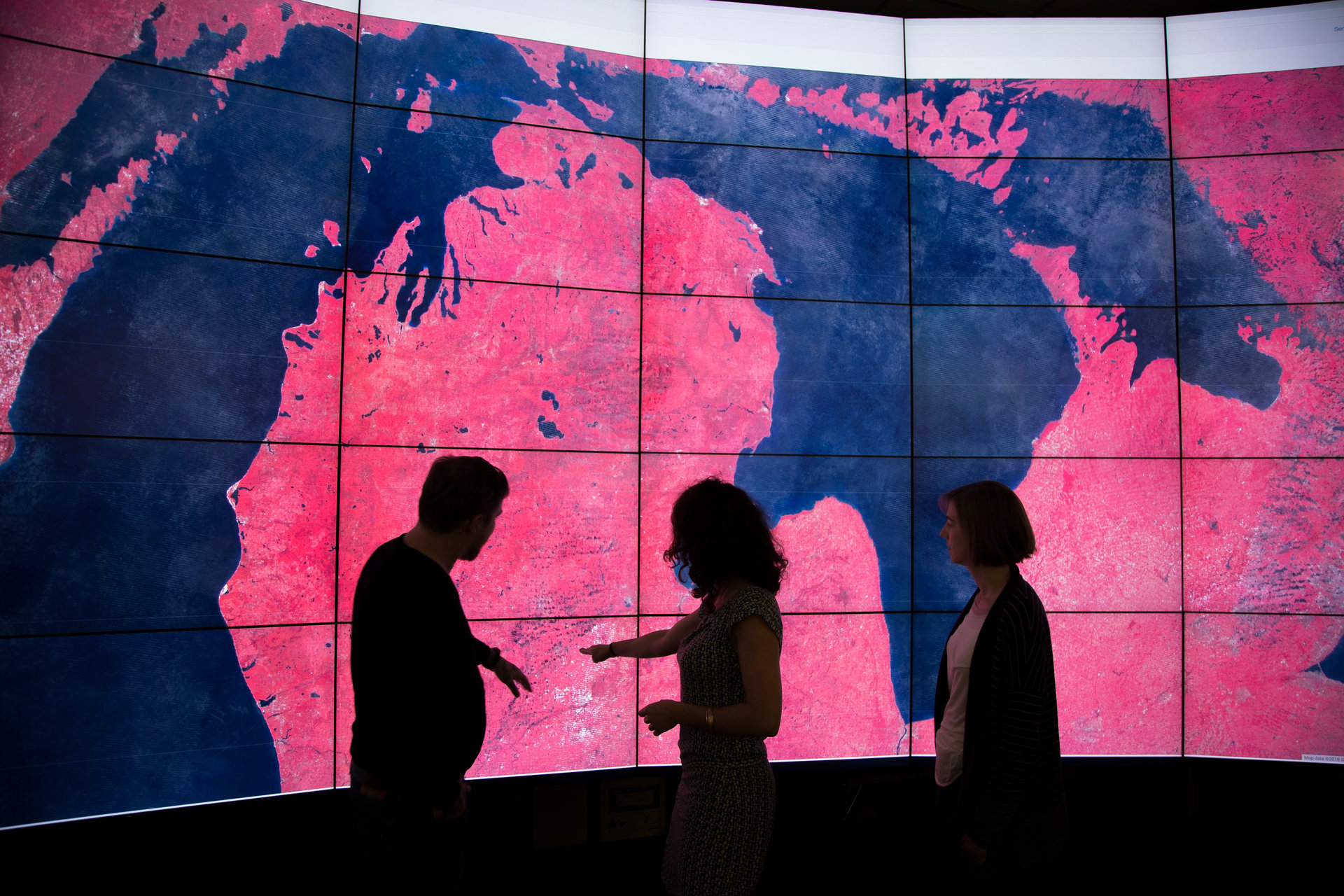Mary Lou Zoback Honored with 2022 Distinguished Alumni Award
Geophysicist and world tectonics leader applies her scientific knowledge for risk reduction.
On October 21, Mary Lou Zoback, ’74, MS ’75, PhD ’78, received the school's 2022 Distinguished Alumni Award for her internationally recognized contributions to geophysics and seismology. An expert on active tectonics and earthquake hazard and risk, Zoback has leveraged her scientific knowledge to strengthen local and regional policies for earthquake safety. In recognition of her many contributions to active tectonics and deformation, Zoback was elected to the National Academy of Sciences in 1995.
“Throughout a career of transformative work, Mary Lou Zoback has created knowledge that has led to solutions to some of our greatest questions around active tectonics,” said Arun Majumdar, the Chester Naramore Dean of the Stanford Doerr School of Sustainability, in presenting the award. “We take great pride in what she has accomplished and are grateful for her service to the school.” The award honors alumni who have made highly significant, long-lasting contributions to civil, government, business, or academic communities.
From the Gulf to the Range
How did an ocean-loving girl who grew up on the Gulf Coast of Florida find her passion and life’s work in the rugged landscape of the American West? For Zoback, it began with an aptitude for science and math. “I spent most of my childhood swimming,” Zoback recalls, “and when I finished high school I decided I wanted to be an oceanographer.” At the time, a qualifying score on a state exam enabled a student to attend any school in Florida at no cost, so Zoback did not explore college options outside the state. She decided on Florida Institute of Technology, which offered an oceanography undergraduate major. She began her studies and found a job in the oceanography lab. After a year, however, she found the work “was more on the biological end, counting algae bloom through microscopes, and I decided I really was not interested.”
By sophomore year, Zoback was seeking out what else she could do with math and science. Taking a course from a new professor, a mechanical engineer from MIT who had done his PhD thesis on the large-scale mechanics of plate tectonics, Zoback found what she was looking for. “In his course,” she says, “I became intrigued with plate tectonics and mountain building even though I’d had no geology courses. Earth science wasn’t taught in Florida. I was a babe in the woods, but learning how plates bend and fold and interact was really exciting.” Zoback continues, “The other thing that was colliding at the time was the first Earth Day and the growing awareness about environmental issues. That was probably a contributing factor to my interest, as well.”
As luck would have it, there was a meeting that year on solar magnetism at Cape Canaveral that her professor encouraged her to attend in order to meet people in the geophysics field. The “plate tectonics revolution” of the late 1960s and early 1970s was in full swing and many of the leaders in the field were in attendance, including Stanford geophysicist Allan Cox. Zoback met him, and he encouraged her to pursue her growing interest in geophysics and transfer to Stanford. She applied and was accepted with a full scholarship sponsored by Chevron. “So that is how I went from Florida, loving the Gulf Coast, loving math and science, to Stanford to study geophysics and plate tectonics,” she says.
On the Farm

Arriving at Stanford as a junior in the fall of 1972, Zoback found herself one of the few undergraduate – and one of the first two female – students in the Geophysics department. She recalls an exceptionally collaborative community, led by department chair George Thompson, who became her advisor and mentor. Zoback remembers that the small handful of undergraduates were given offices with the graduate students, where they benefited from exposure to the grad students’ various research topics. There were also lunchtime volleyball games and barbecues hosted by Thompson and his wife, Anita. Geological Sciences professor Elizabeth Miller recalls meeting Zoback for the first time at a lunch organized by Thompson. “I was interviewing for a faculty position, a rather strenuous process, and George took the extra effort to take Mary Lou and me out to lunch together. Mary Lou had just finished her thesis. She took an interest in my work, as I did in hers, and became a valued colleague. She went on, of course, to her illustrious career and was one of the first female geoscientists elected to the National Academy of Sciences.”
Discovering the Basin and Range
Thompson’s guidance and inspiration stoked Zoback’s interest in the Basin and Range Province (the actively extending, elevated region between the Colorado Plateau and the Sierra), which was to become one of her widely recognized areas of scholarship. She had decided that she wanted to pursue a career as a research scientist at the USGS, where, she says, “the National Research Council had a very competitive graduate student fellowship program that I had my eyes on as a way to get in there. I was very fortunate to get one.” When the fellowship ended, she was given a choice of assignments and was hired as a research geophysicist in the Denver-based earthquake program that had people working in the Basin and Range.
Her instinct and determination to join the government research organization paid off: Zoback spent 28 years as a USGS senior research scientist and served as chief scientist responsible for the USGS earthquake hazards program, managing a team of 220 scientists and technicians throughout the western U.S. At the time of her election to the National Academy of Sciences, Zoback was one of only two USGS scientists – and the first woman from the USGS – ever to receive that honor. She loved both her work and the culture at the agency. “The real strength of the USGS is its people – at all levels from technicians, admin staff to researchers,” she says. “We all felt strongly that we had a public service role to fulfill.” Miller remembers that generosity extending to Stanford, saying, “I relied on the scientists at USGS and Mary Lou’s was a wonderfully collegial group who helped me and my students quite a bit.”
Mapping the World
Zoback’s research emphasis at USGS was the geophysical and geologic investigation of the state of stress, with a focus on the Basin and Range. “I got interested in the stress fields responsible for the large-scale features I was studying,” she says. “So I decided I could use geologic and geophysical data and create a map of the stress field.” She did so for the Western states, then worked with colleagues to extend the map through the contiguous United States. “This work demonstrated that broad regions of the Earth’s crust in the U.S. were subjected to a uniformly oriented stress field and resulted from large-scale tectonic processes,” she explains.
Soon thereafter, Zoback was approached by Karl Fuchs, then president of the International Lithosphere Program. She remembers, “He said, ‘You know, Mary Lou, what you’ve done for the United States you should do for the world.’ I thought about it and I realized that with a global map we could really say something about the large-scale forces acting in the lithosphere. That was very intriguing to me.” Thus, Zoback became the driving force behind the World Stress Map (WSM), leading a collaboration of 40 scientists from 30 countries to create a global compilation of information on the crustal present-day stress field. Given the Arthur L. Day Award by the Geological Society of America in 2007 for this work that established her as a scientist of international stature, Zoback’s citation reads: “Mary Lou and colleagues developed an essential observational data set which did not exist before they began their work. Reproductions of maps from that work now populate more textbooks than [I] can begin to count. It is impossible to go to a geoscience meeting without seeing talks that draw from it.” Today, the WSM is an open-access public database maintained in Germany and is used by academic and industrial institutions working in a wide range of Earth science disciplines such as geodynamics, hazard assessment, hydrocarbon exploitations, and engineering.
Global Import to Local Impact

After the World Stress Map project, Zoback turned her focus closer to home and got much more involved in the San Andreas Fault and earthquake forecasting. “From an engineering perspective, we know what to do about earthquakes, we just lack the incentive and political will to do it,” she says. “With my knowledge and standing as a research scientist, I thought maybe I should try to do something about that.” Zoback was part of a very talented team of USGS, state, academic, and private consultants that created a uniform, Bay Area–wide earthquake forecast indicating that a major (magnitude 6.7 or greater) quake was twice as likely as not to occur in the next 30 years. Friends encouraged her to consider private industry to transform this forecast into policy actions, and she took early retirement from USGS to join a firm that develops natural hazard risk software for the insurance industry. She hoped to quantify the case for insurance premium reductions based on hazard mitigation. Although the short-term realities of business vs. the longer-term realities of natural disaster planning proved frustrating, another door opened for Zoback as the policy implications of earthquake hazard mitigation in the Bay Area came into focus.
“I was asked to join an advisory committee in San Francisco called Community Action Plan for Seismic Safety, started by the city’s chief building inspector, Laurence Kornfield, another marvelous mentor for me,” she says. “He had been in Kobe, Japan, at the time of the 1995 earthquake and saw firsthand the damage and destruction to a modern, first-world city. He was determined to look at San Francisco’s buildings in a quantitative way to ascertain what could happen in the event of a similar event here.” The committee’s nine-year, $1 million study found that future earthquakes would damage thousands of buildings, be particularly devastating to the city’s housing stock, and have long-term effects on affordability for middle- and low-income residents, many of whom would be displaced for years. Zoback became the co-chair (along with a real estate consultant) of the CAPSS committee. Kornfield remembers Zoback as being particularly skillful at explaining the science to the diverse committee of technical and non-technical members, and connecting it to policy goals. “Mary Lou built trust and understanding by communicating clearly and facilitating solutions,” he says. “She provided critical leadership.”
The San Francisco Board of Supervisors subsequently approved an Earthquake Safety Implementation Program (ESIP) to seismically upgrade all vulnerable private buildings in the city based on the recommendations of the CAPSS study. ESIP began in late 2011 under the City Administrator’s office with a 30-year mandate to make San Francisco a more prepared, safer, and resilient city.
“It was a good lesson in local politics, and I came to understand that you can really influence policy as a research scientist,” says Zoback, who emphasizes the importance of a strong research background to students whose career goals include large-scale policy impact. “I became involved in San Francisco because I was passionate about the cause, but I only got the opportunity because of my recognition as a research scientist.”
Explore More
-
The Stanford Forum on the Science of Energy Transition brought together scientific experts, technology innovators, and industry leaders to explore practical pathways to a decarbonized future.
-
A unique hands-on class teaches Stanford Law School students how to work with early-stage companies that have the potential to move the needle on climate and sustainability.
-
The first group of scholars supported under the new Sustainability Accelerator Fellowship program will focus on the challenge of removing billions of tons of greenhouse gases annually from Earth’s atmosphere by the middle of this century.




